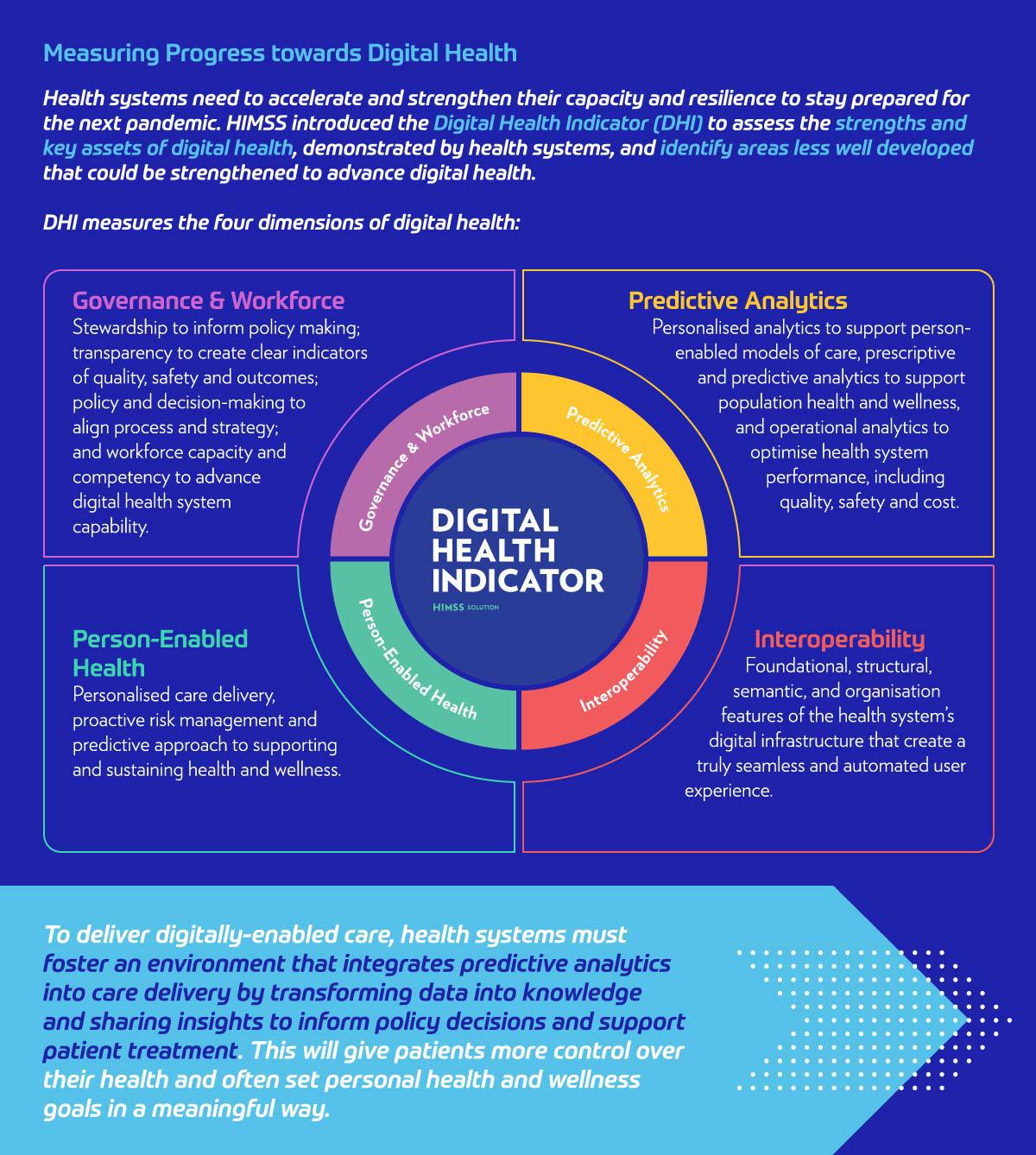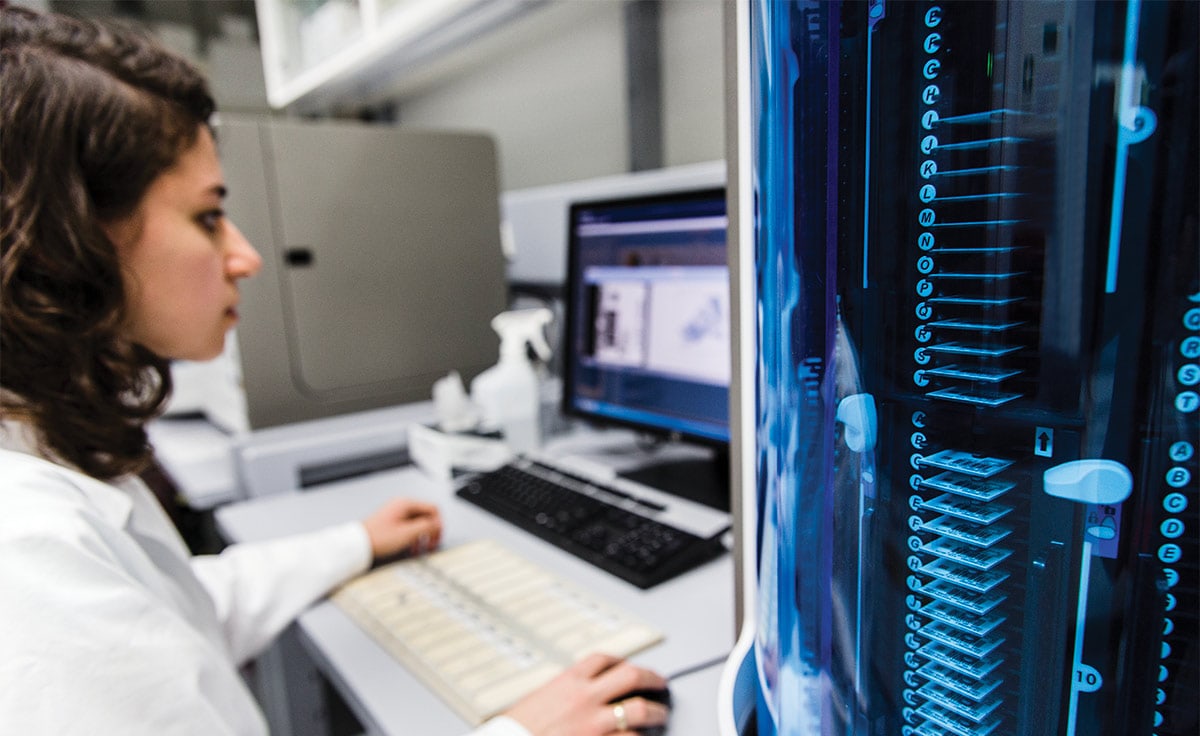“Global interconnectedness has great potential to accelerate human progress, to bridge the digital divide and to develop knowledge societies,” said the United Nations General Assembly in its discussion on the 2030 Agenda for Sustainable Development.1
Long viewed as a panacea for healthcare systems worldwide, there is growing recognition that the strategic use of digital and cutting-edge information and communications technologies will be critical. These tools act as enablers to ensuring equitable healthcare access, greater protection during public health emergencies and significant progress towards societal health and well-being.

This also rings true for Asia Pacific, where digital health has the potential to address key regional hurdles: the unprecedented spike of healthcare costs, shortages of healthcare workers, ageing populations and the growing prevalence of chronic diseases.2
Digital health technology stakeholders and regulators have recognised that the current model for healthcare is not sustainable, and are increasingly leveraging digital tools to deliver better care. But what does it take to build a future-ready digital health ecosystem?
Want a deeper dive? Explore our podcast, where we unpack how the region’s digital health plans are faring.
Unlocking the Potential of Data in Asia Pacific
While health data is generated in some form or another in every country across Asia Pacific, the major differences lie in the quality of this data and the ease of access. For emerging countries where healthcare providers still largely rely on traditional paper-based processes and outdated IT systems, data — the key ingredient that can unearth ways to design better care — often exists in silos, and is not easily accessible.3
Yet this very problem offers developing systems the opportunity to “leapfrog”. Instead of replicating an advanced country model which could be riddled with inherent weaknesses, policymakers in developing countries can sidestep legacy issues and accelerate the development of a sustainable healthcare model that works for them.
Charting the Path to a Digitally Enabled Ecosystem
The first step to building a digital health ecosystem is the creation of a policy framework to ensure that such data lives in an integrated, interoperable environment. This is what India hopes to achieve with its ambitious National Digital Health Mission which aims to provide the necessary support for the integration of digital health infrastructure in the country.4
However, in this regard, developed nations have the advantage of a well-established health system and a national strategy that supports the adoption of digital technologies more widely, without limiting its use to a few sectors. Singapore, as part of its Smart Nation initiative, says this goal is “underpinned by efforts to ensure that all segments of society are able to harness digital technologies and benefit from them”.5
But the real potential of a digital health ecosystem can only be fully unlocked when there is data at scale and more stakeholders are involved. Many healthcare players are piloting blockchain technology, popularly associated with digital currency, to connect users on separate networks and enable the secure sharing of data.

Blockchain technology is now being integrated into healthcare, a key example being in the form of digital health passports.
An example is the move towards “digital health passports” — blockchain-powered digital wallets that not only store personal medical data like polymerase chain reaction (PCR) test results from labs securely, but also allow healthcare organisations to share and verify tamper-proof patient data. One such case is the Travel Pass mobile app developed by the International Air Transport Association, which will soon be trialled by national carriers such as Air New Zealand, Malaysia Airlines and Singapore Airlines.6
Finally, the culmination of a data-driven ecosystem rests on its desire to be forward-looking but equally determined to act today. Lessons from the pandemic have clearly shown that digital technology can strengthen surveillance efforts. Its use provides early disease outbreak signs, supports the continuity of care for chronic patients and meets the fast-evolving needs of society.

Click to download the APAC Digital Health Readiness infographic
Diagnostic Data: the Core of Healthcare Decisions
Digital efforts that provide incremental gains, rather than sweeping changes, are just as important. In the case of labs, the growing digital push offers an opportunity to provide value in healthcare beyond the diagnostic sample result.
Today, many digital diagnostic solutions can support better integration, analytics and workflows in the lab. In turn, this empowers healthcare providers to reduce complexity and leverage data in more powerful ways. Incentivising the adoption of such approaches, with a shift to value-based healthcare for instance, opens up possibilities that can drive tangible benefits and improve patient outcomes.
Related reading: Lean Thinking for Improved Diagnostics and Patient Care
Many tools already offer opportunities to link clinicians with laboratory experts as part of multidisciplinary team collaboration. By aggregating all relevant patient data from multiple sources into one dashboard, and helping to standardise clinical workflow, labs can revolutionise how previously siloed teams collaborate.

Digital health ecosystems are finding ways to harness diagnostic data, but stakeholders must align and work together for this to happen smoothly.
From Traditional to Tele-monitoring
Yet, most regulations still focus on traditional medical and diagnostic technologies.
As the Digital Health Regulations white paper by the Asia Pacific Medical Technology Association (APACMed) notes, “to bring safe and effective digital technologies into healthcare at a pace that matches the speed of what’s possible — and that patients deserve — we must redesign our regulatory approach to accommodate the shorter timelines and iterative nature of software development.”7
Healthcare of the future demands disruptive innovations and advanced technologies that expand beyond the “walls” of care to deliver an enhanced experience for both providers and receivers of care.8 For clinicians, this means actionable insights that can drive meaningful outcomes, and for patients it is about becoming an active and more informed voice in their own healthcare decisions.
With tele-monitoring, embedded sensors and digital diagnostics creating a wealth of information, data privacy and ownership are additional areas that governments across the region have to consider. This is where policy decisions to develop a data protection framework that balances regulation and innovation becomes a tipping point.
To keep up with the changing landscape, South Korea has been actively adapting its regulations relating to healthcare and technology. It has created new guidelines specific to digital health, touching on topics such as artificial intelligence (AI) and big data-applied medical devices.9 In turn, these helped guide the development of new healthcare solutions, including “Dr Answer”,10 an AI-powered precision medicine platform that consolidates various types of medical data.
South Korea, once known as having the “strictest data privacy laws”,11 is also accelerating deregulation to spur innovation.12 The country’s recent amendments to data privacy laws have improved access to data, powering the private sector to retrieve pseudonymised medical data13 — crucial in the development of patient-centric medical equipment, technologies and medicines.
Ultimately, the transformation within healthcare cannot be solely driven by digital solutions. Stakeholders will have to work together and design a technology-driven or digitally-enabled ecosystem that is worthy of a new era in healthcare — one that has diagnostics at its centre.
Stay updated on healthcare and diagnostics news with Roche Diagram magazine.
References:
1The United Nations. (2015). Transforming Our World: the 2030 Agenda for Sustainable Development. Retrieved from https://sdgs.un.org/2030agenda
2Bain & Company. (2020). Asia-Pacific Front Line of Healthcare Report 2020. Retrieved from https://www.bain.com/contentassets/a1d1395b809d424a8db679657f95b19d/bain_report_asia-pacific_front_line_of_healthcare.pdf
3PwC. (2016). The Digital Healthcare Leap. Digital health in emerging markets, August 2016. Retrieved from https://www.pwc.com/sg/en/publications/assets/healthcare-digital-leap-2016.pdf
4The Ministry of Health and Family Welfare, Government of India. (2020). National Digital Health Mission (NDHM). Retrieved from https://www.nhp.gov.in/national-digital-health-mission-(ndhm)_pg
5Smart Nation and Digital Government Office, Singapore. (2021). Transforming Singapore Through Technology. Retrieved from https://www.smartnation.gov.sg/why-Smart-Nation/transforming-singapore
6The International Air Transport Association. (2021). IATA Travel Pass Initiative. Retrieved from https://www.iata.org/en/programs/passenger/travel-pass/
7APACMed Digital Health Committee Regulatory Working Group. (2021). Digital Health Regulation In Asia-Pacific: Overview and Best Practices. Retrieved from https://apacmed.org/content/uploads/2021/01/APACMed-Digital-Health-Regulation-in-APAC.pdf
8Meskó B, Drobni Z, Bényei É, et al. (2017). Digital health is a cultural transformation of traditional healthcare. mHealth, 3, 38. https://doi.org/10.21037/mhealth.2017.08.07
9Ministry of Food and Drug Safety, Republic of Korea. (2020). Guideline on Review and Approval of Artificial Intelligence (AI) and big data-based Medical Devices (For Industry). Retrieved from https://www.mfds.go.kr/eng/brd/m_40/view.do?seq=72623&srchFr=&srchTo=&srchWord=&srchTp=&itm_seq_1=0&itm_seq_2=0&multi_itm_seq=0&company_cd=&company_nm=&page=1
10Ministry of Science and ICT, Republic of Korea. (2020). Dr. Answer, Developing Inroads Into Global Market (July 16). Retrieved from https://english.msit.go.kr/eng/bbs/view.do?sCode=eng&mId=4&mPid=2&pageIndex=&bbsSeqNo=42&nttSeqNo=444&searchOpt=&searchTxt=
11Greenleaf G, Park W. (2012). Korea’s New Act: Asia’s Toughest Data Privacy Law. Retrieved from https://www.researchgate.net/publication/256029134_Korea’s_New_Act_Asia’s_Toughest_Data_Privacy_Law#:~:text=When%20it%20was%20enacted%20in,%5B42%5D.%20…
12The Republic of Korea Cheong Wa Dae. (2018). National Assembly Address by President Moon Jae-in to Propose Government Budget for 2019 and Plans for Fiscal Operations. Retrieved from https://english1.president.go.kr/Briefingspeeches/Speeches/90
13Kang CH, Kim SH, Son D. (2020). South Korea: Korea Introduces Major Amendments To Data Privacy Laws. Retrieved from https://www.mondaq.com/privacy-protection/898830/korea-introduces-major-amendments-to-data-privacy-laws














